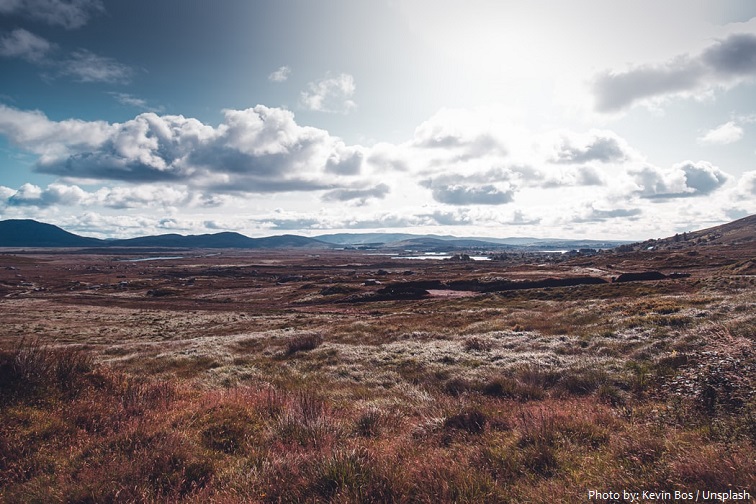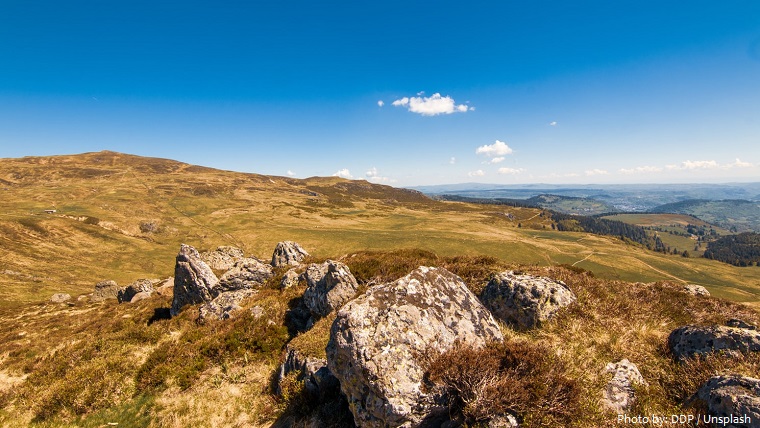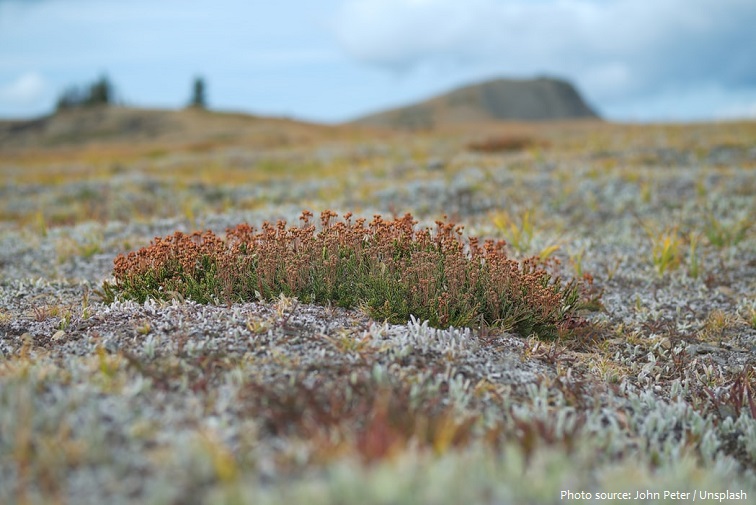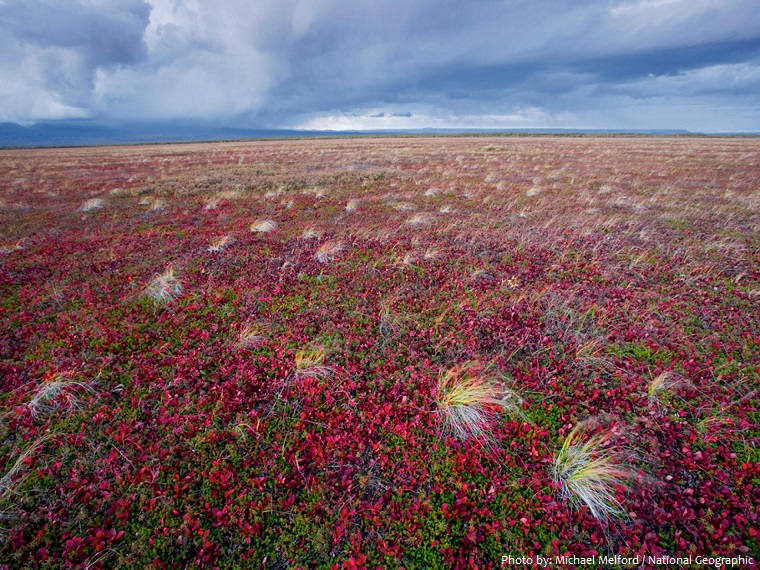The tundra is a terrestrial biome that is characterized by extreme cold, low biological diversity, long winters and brief growing seasons.
It is known for large stretches of bare ground and rock and for patchy mantles of low vegetation such as mosses, lichens, herbs, and small shrubs.
The term “tundra” comes through Russian тундра (tûndra) from the Kildin Sámi word тӯндар (tūndâr) meaning “uplands”, “treeless mountain tract.”
The global extent of the tundra biome is considerable, accounting for roughly 10 percent of Earth’s surface.
There are three regions and associated types of tundra: Arctic tundra, alpine tundra, and Antarctic tundra.
Arctic tundra occurs in the far Northern Hemisphere, north of the taiga belt (biome characterized by coniferous forests). Parts of the US state of Alaska and the countries of Canada, Greenland, Iceland, Norway and Russia are all in the Arctic tundra biome. Notable animals in the Arctic tundra include reindeer (caribou), musk ox, Arctic hare, Arctic fox, snowy owl, lemmings, and even polar bears near the ocean. The Arctic tundra is one of the world’s youngest biomes, forming ten thousand years ago from a retreating continental glacier.
Antarctic tundra occurs on Antarctica and on several Antarctic and subantarctic islands. Most of Antarctica is too cold and dry to support vegetation, and most of the continent is covered by ice fields. However, some portions of the continent, particularly the Antarctic Peninsula, have areas of rocky soil that support plant life. The flora presently consists of around 300–400 lichens, 100 mosses, 25 liverworts, and around 700 terrestrial and aquatic algae species, which live on the areas of exposed rock and soil around the shore of the continent. Notable animals in the Antarctic tundra include seals and penguins, and some small mammals, like rabbits and cats have been introduced by humans.
Alpine tundra covers approximately 3 percent of Earth’s land surface, and it is mostly found in the Northern Hemisphere. This habitat can be found in mountainous areas worldwide, occurring at high elevations where temperatures are too low and winds are too strong for the growth of trees. Because alpine tundra is located in various widely separated regions of the Earth, there is no animal species common to all areas of alpine tundra. Notable animals in the alpine tundra include Kea parrots, marmots, mountain goats, sheep, elk, and pika.
The tundra is coldest of all the biomes with an annual average temperature less than 5°C (41°F).
The deep and cold snow makes life in the tundra very difficult. Every animal must adapt in order to survive. Some have thick fur that turns white during the winter. Others find places to hibernate during the winter months.
Some plants that freeze while in flower when sudden storms hit continue to develop and produce seed upon thawing.
One constant factor shaping the tundra is alternate freezing and thawing of the ground.
Permafrost — perennially frozen ground — is a significant feature of the Arctic and Antarctica tundra; however, it does not typically occur in alpine regions.
A severe threat to tundra is global warming, which causes permafrost to melt. The melting of the permafrost in a given area on human time scales (decades or centuries) could radically change which species can survive there.
Earth’s tundra regions are harsh and remote, so fewer humans have settled there than in other environments. However, humans have a long history in the tundra. For example, the first people who went to North America from Asia more than 20,000 years ago traveled through vast tundra settings on both continents.
The Finns called their treeless northern reaches the tunturi, but the concept of a vast frozen plain as a special ecological realm called tundra was developed by the Russians.
There is some ambiguity on whether Magellanic moorland, on the west coast of Patagonia, should be considered tundra or not.






